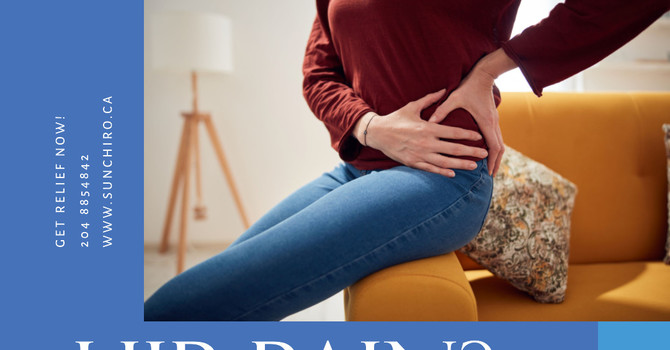Understanding Low Back Pain in Winnipeg Part 2
Understanding and Preventing Your Low Back Pain In Winnipeg Part 2.
About 80% of Canadians suffer debilitating low back pain at some point in their life. This fact is staggering, yet it doesn’t have to be this common. The key to staying out of this group of low back pain sufferers comes down to one word: Prevention. If I had to choose one common problem amongst most low back pain sufferers, it would be bad low back position during common activities such as brushing your teeth, bending over, picking up a small child, exercising and sitting.
The lumbar spine, which is the lower part of the spine, is meant to have a natural curve to it that displaces the forces of gravity, weight, etc. evenly and minimally. When this natural curve is straightened or reduced, the forces on the discs, muscles, and ligaments of the low back are significantly increased. For example, sitting without maintaining the natural curve increases the forces on those structures by 30-40%!
There are many conditions that can be covered under the umbrella of low back pain, but in the next few posts, we will cover the following conditions The keys to prevention of low back pain are as follows:
• Understand your symptoms and risk factors
• Body Preparation and Positioning
• Proper Activities of Daily Living
• Corrective Exercises
• Treatment Considerations
Last post, we talked about common sprain stains or common uncomplicated mechanical low back pain. In this post, we will be exploring two more specific causes of low back pain.
Facet syndrome

Facet joints are the small joints in the back of the spine that are responsible for much of the movement in our low back. The facet joints also limit side-to-side movement. Like any joints these facet joints can become irritated, inflamed and can be a source of pain. The pain from facet joints is often worst when moving from a sitting position to a standing position or moving from a bent-over position back to an upright standing position. Bending backward when standing is often more uncomfortable than bending forward because bending backward puts strain and pressure on the facet joints, whereas bending forward helps them to separate and makes more space in the joint.
The main physical causes of this condition are:
• Excessive weight
• Overuse (sports or labor)
• Whiplash/motor vehicle accident
• Pre-existing arthritis
• Sitting for long periods of time
However, with the proper education, you can protect yourself from many of these causes. The primary sufferers of this condition, especially chronic cases, often have weak stabilizing muscles. A co-morbid factor of this condition is often a desk job that involves sitting for most of the day. This type of patient usually has poor sitting posture, which can lead to a weakening of your spinal erectors and destabilize the spine, contributing to the condition. The importance of a strong core and training your spinal muscles cannot be overstated.
In cases where the injury stems from a problem related to overuse, poor posture or improper exercise, there are steps that can be taken to help avoid these injuries from happening. Proper instruction about your postural habits can reduce the detrimental effects of sitting on the spine, as well as education about correct lifting form can reduce these episodes of low back pain and help you build a healthy spine.
As you might remember from last week the risk factors for facet joint syndrome are similar to those for sprain strain and mechanical back pain. That’s because when you have a weak core and poor spinal mechanics and postures, many of the structures that can cause pain are in jeopardy of getting injured.
Treatment for lumbar facet syndrome will most often involve comfort and anti-inflammatory measures in the early or acute stages as well as adjustments to make sure that the facet joints in your low back are moving correctly and functioning well. Exercises are also a key long term strategy to help stabilize your spine and minimize recurrence.
Lumbar stenosis
This condition occurs when there is a narrowing of the spinal canal in the lumbar vertebrae (low back). Often this results in compression or crowding of the spinal cord, which can lead to pain, numbness, discomfort and radiating symptoms. What the mechanism of this is occurring is usually caused by the degenerative changes of ageing. However, there are other causes.
The main physical causes of this condition are:
• Degeneration of the lumbar spine
• Lumbar disc herniation putting pressure on the spinal cord
• Osteoporosis
• Dwarfism (achondroplasia)
• Tumor
Degeneration of the spinal column is extremely common with ageing and may reflect normal changes in an ageing spine. It does not always result in lumbar stenosis but is one of the common causes of stenosis. So just because you have some degenerative changes in your low back does not mean you will get or have stenosis. But if you have stenosis, then a common reason for this is advanced osteoarthritis in your lower back.
While it is difficult or impossible to combat normal ageing of the spine, there are some habits and tips you can use to reduce this condition related to the other causes. Reduce your chances of a lumbar disc herniation by learning proper bending and lifting biomechanics by utilizing your lifting power from your legs and not your back. As far as osteoarthritis goes, moving well and moving frequently is important. If you have a labor-intensive job, try to make sure to lift with good mechanics. And if your job is sedentary make sure to get up and move frequently. Either too much or too little movement can increase your chances of developing osteoarthritis in your spine.
Treatment for stenosis involves comfort measures and a detailed assessment to see which movements are more provocative and which movements are less so. Developing movement and activity strategies that are within your tolerance is a critical component to the successful management of stenosis. Physical treatments like adjustments and mobilizations to maintain and restore movement in your low back are also critical to make sure you can move well and maintain activities.



